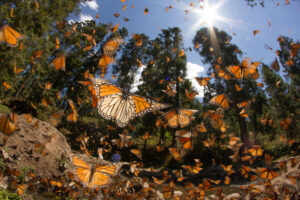Winter is on its way, and sadly, the watering season is almost over, but don’t forget about this crucial task! After you’ve done your end-of-season tasks and have things tidied up for spring, thoroughly clean and store your garden tools. This extra step guarantees that everything is simple to find and in good working order when the weather warms up again. These steps will also help preserve the product’s life year after year.
Where Do I Keep My Garden Tools?
Firstly, your garden supplies need their own designated section to hang out. Hopefully, you have an area like this where you can clear and prep for storage. Think of places like the garage, garden shed, or basement. If these are not available for you to use, a storage closet or unused cabinet in your home will do just fine.
How Should I Prepare My Tools?
One of the biggest misconceptions about outdoor gardening equipment is that they can sit outside season after season. No matter how durable the product is, adverse weather can cause your products to break down over time and fail, especially products with moving parts or electronic components. When temperatures get below 40°F, and your region experiences frost, the water left behind in your tools and equipment will freeze and expand, damaging the product and reducing its life. Follow these tips to maintain and prolong your product’s life.
Garden Hose:
Garden hoses are tricky because they are easily forgotten and can quickly become damaged when left out in poor conditions. Also, left-out hoses can be run over by mowers or children playing, causing the hose to kink or tear. To prevent this, remove the hose from the faucet and drain the hose of all water. After that, rinse the exterior so dirt and debris cannot dry on the skin and cause cracking. Then, coil up the hose neatly and place it on a flat surface or a hose reel inside. Keep it stored in a dry place until spring.
Digital Water Timers:
Debris or sediments commonly found in most home water systems can build up in your timer and cause mechanical issues. So, remove the timer from the faucet, and activate the ‘Manual’ mode on your Melnor device by pressing the ‘Manual’ button. Then, open each zone and spray water through the valves and faucet connection to flush out any built-up sediments or debris. Also, check that the filter washer is clear. If you notice any dirt, make sure to spray it off with water as well.

Most digital water timers, like the ones made by Melnor®, use batteries, and when left out in colder temperatures, the batteries will die. At the end of the season or when there is frost in the forecast, remove your timer from the faucet and remove the batteries. Batteries typically last one season, so if you used your timer frequently, it’s smart to scrap the old ones anyway.

Finally, let your timer air out and store the timer indoors, away from the freezing temperatures, in a dry place.
Note: How to Reset your Timer
Aggressive transportation of the water timer can cause the valves to open if they were shut in the process of bringing it inside. So, when the cold weather passes and you go to re-attach it to the faucet, follow the below steps to reset your water timers’ valves.
Hydrologic Advanced Digital Water Timer
Models 73280, 73100, 73015
- Turn the water off.
- Remove the batteries and wait for the screen to go blank.
- Reinsert the batteries
- Turn the water back on.
- If the problem persists, turn off the water. Use the Manual feature (Step 11 in the instruction manual) to open and close each valve 3 times.
AquaTimer Electronic Water Timer
Models 63280, 63100, 63015
- Press and hold the cursor button for 7 seconds.
- The screen will display ‘Reset’
- All programming will be lost when the timer displays ‘Reset’
- Re-enter programming
Sprinklers:
When storing your Melnor® sprinklers, it’s important to remember that, similar to water timers, poor water quality can cause debris and sediment buildup. This causes the motor to back up and stops the sprinkler from oscillating regularly. You should rinse and flush water through the sprinkler periodically to prevent this, not just when bringing it inside for the winter. Do this by removing the end cap plug, attaching the sprinkler to a hose or faucet, and running water through it. Use the end cap plug, which doubles as a nozzle cleaner, to clean each individual nozzle head. If you use a filter washer with your sprinklers, spray off any built-up sediments on the washer that may cause blockages.
Once cleaned, let the sprinkler air out and store it inside, in a dry location, away from freezing temperatures.
Read our sprinkler cleaning and maintenance guide for more information.
Nozzles and Wands:
Just like sprinklers, water can be left behind inside nozzles and wands. When left outside in colder temperatures, the water can freeze and expand, damaging the casings. This means that the next time you use the nozzle or watering wand, water will shoot out the sides at the handle and flow-control knobs. Prevent this by properly draining your garden nozzles of water, flushing out and cleaning off debris, and storing them in a dry place.
Finally, taking a few hours or so to store your garden supplies for the winter properly can prevent damage or rust. Plus, it also makes it easier to find what you’re looking for come springtime.



